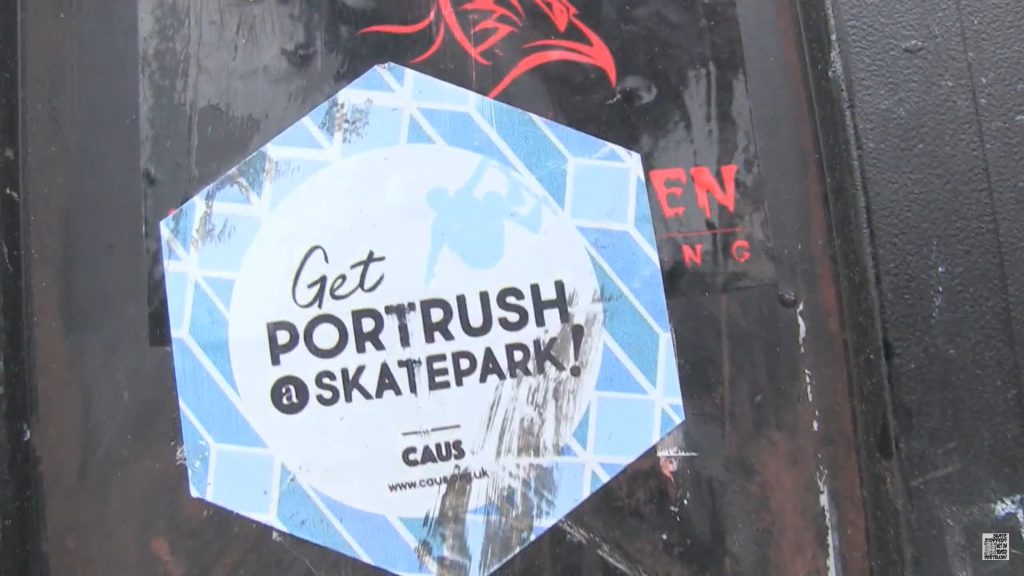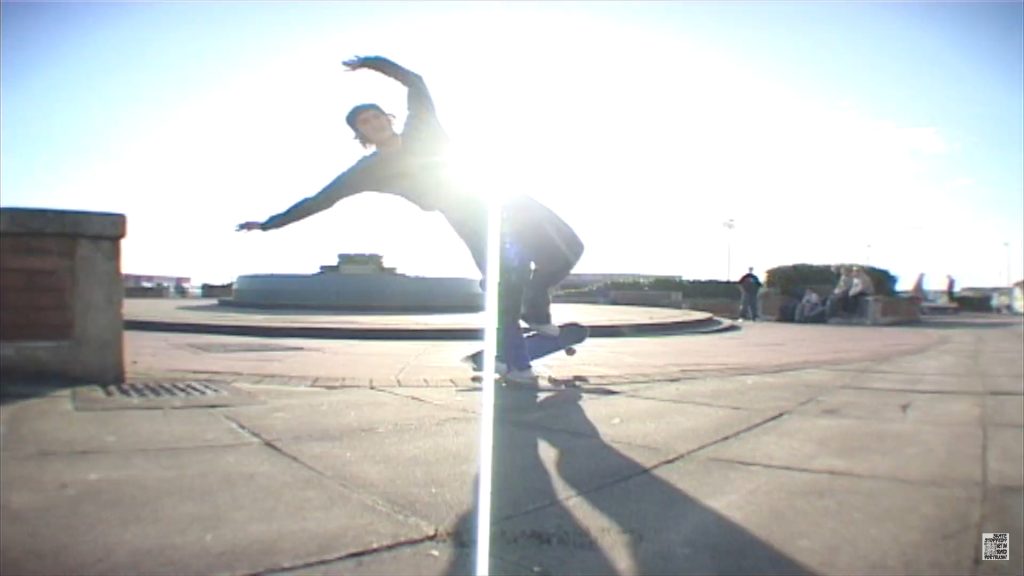
Jim Donaghey, Community Innovation Practitioner at Ulster University, discusses the vital role of creative methodologies in his CIP research.
Creative research methodologies have been gaining in popularity in recent decades, with numerous explorations into innovative ways to do research with people in place. My current CIP research – ‘Get Portrush a Skatepark! Nurturing Skateboard Culture on Northern Ireland’s North Coast’ – in partnership with the skateboarding community in Portrush, County Antrim, is one such creative foray.
When I tell people about my research at academic conferences, or when chatting with colleagues from other disciplines, I sometimes sense a raised eyebrow about the concept of creative methodologies and cultural practice.
‘How does that qualify as social science?’ they ask.
‘Show me the data!’ they implore.
As a result, I am experienced in extolling the value of creative approaches to research. Countering the empiricism of the ‘ivory tower’, it’s about re-centring on ethical rigour, meaningful, long-term engagement, collective analysis, and shared research outputs that are accessible and useful to the people we do research with.

But when it comes to skateboarding, pinpointing the creativity that the methodology aims to engage with is perhaps an additional challenge (as compared with arts-based research).
‘Show me the creativity!’ I hear you cry.
Critically engaged analyses of skateboarding tend to keep the ludic aspects of the culture front-and-centre (see: Jeffries et al. 2015; Hellman 2016; Chiu and Giamarino 2019). Anyone who is involved with or has a passionate sympathy for skateboarding appreciates that its core creative energy stems from its playful reimagining of public space (and the cultural resistance that that entails). The inclusion of skateboarding as an Olympic sport at Tokyo 2021 highlights a tension between creative counter-culture and ‘serious’ sport. The terminology attached to skateboarding manoeuvres, tricks, body positions, and subtle ameliorations thereof is more akin to ballroom dancing than to athletics, and the collaborative learning and sharing of new techniques and tricks rubs up against norms of competitive sport (Kilberth and Schwier 2022).
The deep connection between skateboarding and the civic fabric underpins my CIP research – skateboarders are uniquely sensitive to changes brought about by the redevelopment of public space and they are acutely aware of the marginalisation of skateboarding culture in that process.
Videography is also a crucial aspect of skateboarding culture, both as a focus of local creative activity and as a means of networking with global skateboard culture. Hours of effort go into the painstaking production of ‘bits’, typically just a few seconds long, which are collected into films. The creativity of videography is readily applicable to creative research methodologies – people can tell their own stories and help us see the world through their lens (Shrum et al. 2007) – but the key point here is that videography is intertwined with the practice of skateboarding, rather than something external or simply an extractive documentation. It’s part-and-parcel of skateboarding-as-creativity.
So, what is creative about research with skateboarders? For me, it’s the unique interplay of artistic flair in performance, the reimagining of public space, and the documentation. The research insights emerge when we tap into the critical dialogues that surround this whole package of skateboarding-as-creativity and, in the Portrush context, the skaters’ lived experience of ongoing marginalisation. Each stage of the research elicits reflection around creative practice, which, combined with mini-surveys and online feedback, produces our research transcript. The video production itself is iterative, meaning that as newly shared outputs spark conversation among skaters, we can then collaboratively produce new video material in response to those reflections.
This project intervenes to support the skatepark campaign by raising the profile of skateboarding tradition in the area, highlighting the campaign itself, and creatively engaging the skateboarders in critical dialogue about their practice and the dynamics of their resortifying context.
Stay tuned to see how the project unfolds…
Jim Donaghey is a Community Innovation Practitioner from the 2023 cohort. You can find more of his work on our website or read about the 2023 CIP programme.
References and useful links
Skate Stopped Portrush YouTube
Skate Stopped Portrush Instagram
Chiu, C. and Giamarino, C. (2019). Creativity, conviviality, and civil society in neoliberalizing public space: Changing politics and discourses in skateboarder activism from New York City to Los Angeles. Journal of Sport and Social Issues, 43(6), 462-492.
Hellman, A.A. (2016). ‘Skateboarding is like dancing’: Masculinity as a performative visual culture in art education. International Journal of Education through Art, 12(3), 327-344.
Jeffries, M., Messer, S., and Swords, J. (2015). He catches things in flight: Scopic regimes, visuality, and skateboarding in Tyneside, England. In K.J. Lombard (ed.) Skateboarding: Subcultures, Sites and Shifts (pp. 57-72). London: Routledge.
Kilberth, V. and Schwier, J. (eds) (2022). Skateboarding between Subculture and the Olympics: A Youth Culture under Pressure from Commercialization and Sportification. Bielefeld: transcript.
Shrum, W., Duque, R., and Ynalvez, M. (2007). Lessons of the lower ninth: Methodology and epistemology of video ethnography. Technology in Society, 29(2), 215-225.
Brought to you by


